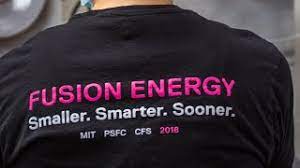
Breaking News
 Liminality: Truthstream Media's Lost History Film | Coming Fourth of July 2026
Liminality: Truthstream Media's Lost History Film | Coming Fourth of July 2026
 This Man Just Explained LA Riots PERFECTLY
This Man Just Explained LA Riots PERFECTLY
Top Tech News
 NVIDIA just announced the T5000 robot brain microprocessor that can power TERMINATORS
NVIDIA just announced the T5000 robot brain microprocessor that can power TERMINATORS
 Two-story family home was 3D-printed in just 18 hours
Two-story family home was 3D-printed in just 18 hours
 This Hypersonic Space Plane Will Fly From London to N.Y.C. in an Hour
This Hypersonic Space Plane Will Fly From London to N.Y.C. in an Hour
 Magnetic Fields Reshape the Movement of Sound Waves in a Stunning Discovery
Magnetic Fields Reshape the Movement of Sound Waves in a Stunning Discovery
 There are studies that have shown that there is a peptide that can completely regenerate nerves
There are studies that have shown that there is a peptide that can completely regenerate nerves
 Swedish startup unveils Starlink alternative - that Musk can't switch off
Swedish startup unveils Starlink alternative - that Musk can't switch off
 Video Games At 30,000 Feet? Starlink's Airline Rollout Is Making It Reality
Video Games At 30,000 Feet? Starlink's Airline Rollout Is Making It Reality
 Automating Pregnancy through Robot Surrogates
Automating Pregnancy through Robot Surrogates
 Grok 4 Vending Machine Win, Stealth Grok 4 coding Leading to Possible AGI with Grok 5
Grok 4 Vending Machine Win, Stealth Grok 4 coding Leading to Possible AGI with Grok 5
World's strongest fusion magnet brings new power to nuclear pursuit

In the field of nuclear fusion some are going big with their pursuit of clean, inexhaustible energy, like those piecing together the seven-story building to house ITER, the world's largest tokamak reactor.
The development of the novel magnet was led by MIT scientists working on an experimental fusion reactor design first revealed back in 2015. Called ARC (affordable, robust, compact), the reactor is a doughnut-shaped tokamak, which like ITER seeks to recreate the conditions inside our Sun that sees hydrogen atoms fuse together under extreme heat and pressure to release massive amounts of clean energy. ARC, however, will be around half the size of ITER, with a radius of 3.3 m (10.8 ft).

 Law n' Order
Law n' Order EMP and EMF-Free Vehicles
EMP and EMF-Free Vehicles HERE COMES THE MOTHERSHIP
HERE COMES THE MOTHERSHIP

